Air conditioners have become somewhat of a necessary appliance in our life as it makes the hot summer months bearable. However, for something so important, do you know everything that we should about air conditioners? Don’t you think it is best to have some basic and important information about our air conditioners? One of the most basic things to know is the different types of air conditioners. Knowing about this will come in handy when you decide to get a new air conditioner or when you try to figure out which air conditioner will be best for you and your home.
Let us dive in and know more about different types of air conditioners with their advantages and disadvantages.
Central Air Conditioner
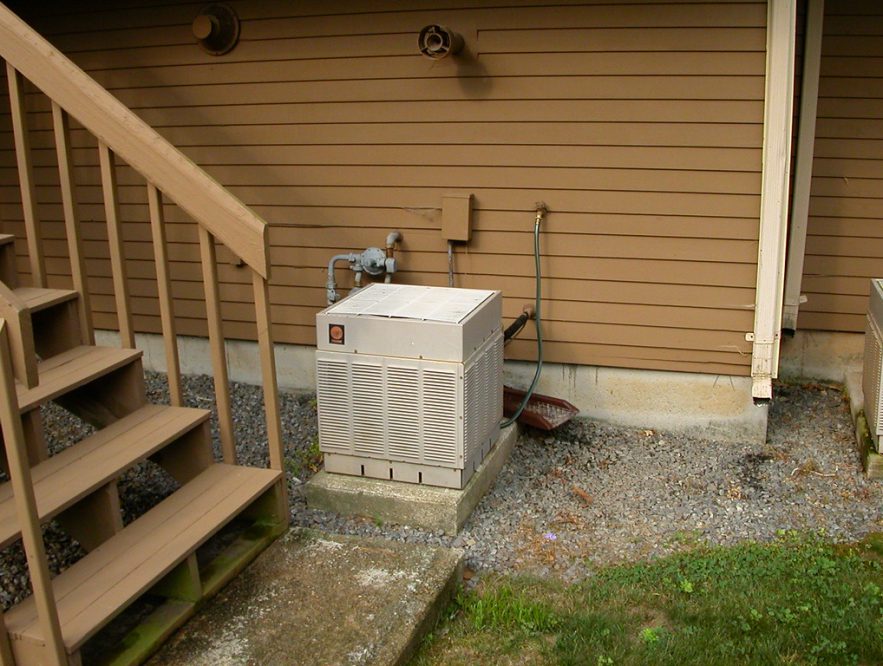
If you have a large space or multiple rooms that you want to cool at once, a central air conditioner is your best choice. The central air conditioning system is also called a ducted system as it has a split system that circulates cold air with the help of the duct system installed inside your home. This system has two main units in which the outdoor unit includes the compressor and condenser, while the indoor unit has air handler and evaporator coils. This air conditioner can also be used as an HVAC system by combining it with a natural gas furnace or a set of heating coils inside your home.
Advantages:
- It cools the entire house at once and provides a regulated cool environment inside your house in the minimum time.
- Similar cooling in the entire house at the same time reduces humidity that creates an overall comfortable environment.
Disadvantages:
- It consumes more energy which leads to higher energy bills.
- Any issue with ducts affects the effectiveness and efficiency of your system.
- The exposed outdoor unit susceptible to blockage and damage creating problems with the condenser unit.
Ductless Mini Split Air Conditioner
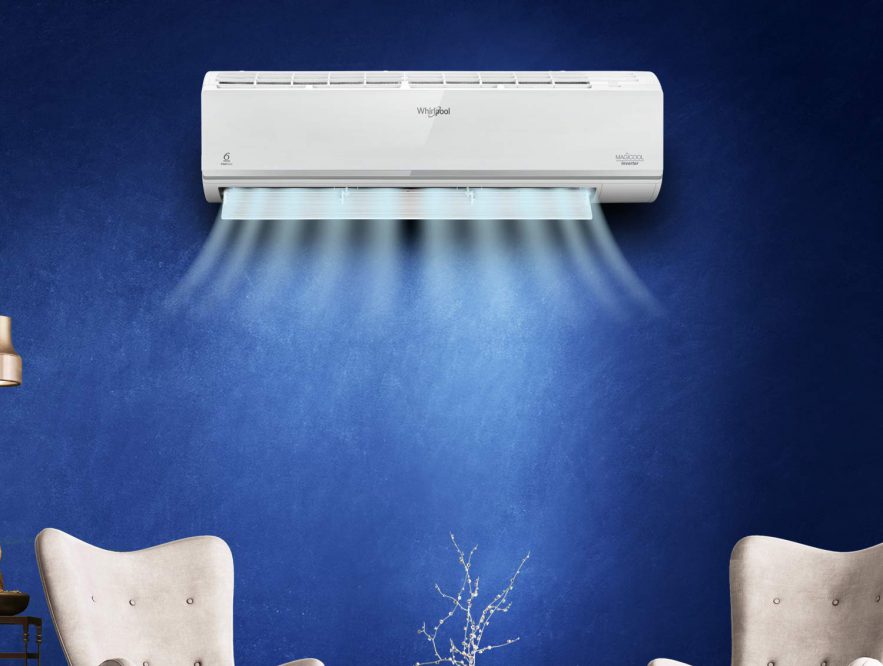
The ductless mini-split air conditioners are best suited for houses that don’t have any duct system. In the case of these air conditioners, one unit is installed in each room, just like window air conditioners. These air conditioners are also a combination of two main units i.e., an indoor unit and an outdoor unit. Both the units of these air conditioners are mounted on the walls and are connected with tubing that circulates the refrigerant between them. These mini-split air conditioners are more energy-efficient and can be controlled via a remote. You can also convert your mini-split air conditioner into a smart air conditioner by combining it with a smart remote controller and manage your air conditioner from anywhere via your smart devices.
Some bestseller mini-split air conditioners:
- Whirlpool 1.5 Ton 3 Star Inverter Split AC
- DAIKIN 9,000 BTU 17 SEER Wall-Mounted Ductless Mini-Split Inverter Air Conditioner
Advantages:
- Easy to install anywhere without any need for ductwork.
- Easy control over the temperature of each room separately.
Disadvantages:
- A separate unit is required for every room.
- Visible to everyone as it is installed on a wall.
Window Air Conditioner
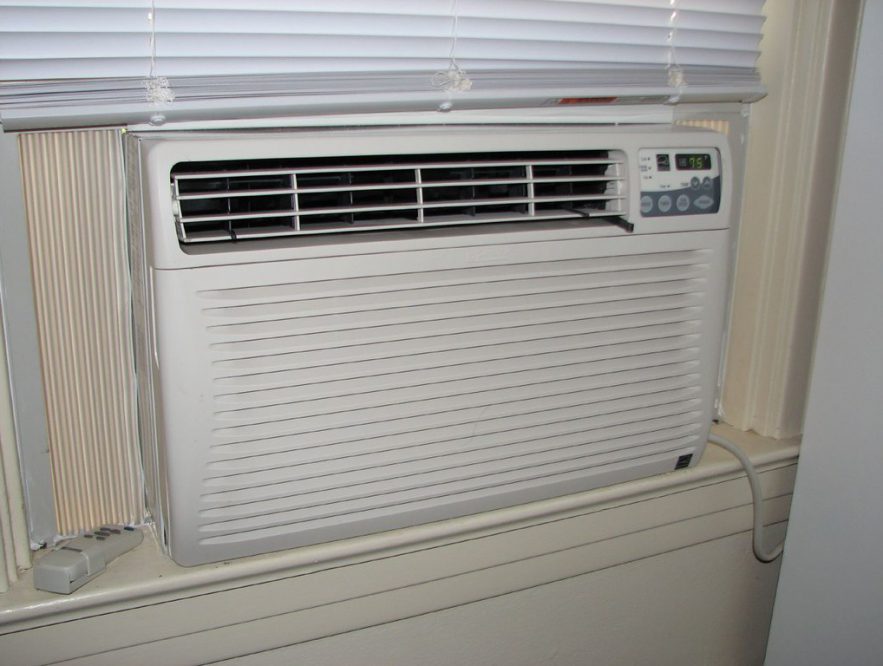
Window air conditioners are one of the most commonly used air conditioners and are suitable for cooling a small area or a single room only. These air conditioners come in a single unit that includes all of its components and is installed either on a window or in a slot created in the wall. The controls of this air conditioner are usually on the unit itself and it can come with remote control as well.
Some recommended window air conditioners for you:
- Amazon Basics Window-Mounted Air Conditioner with Mechanical Control
- LG 12,000 BTU 115V Window-Mounted Air Conditioner with Remote Control
Advantages:
- These are cheaper to buy and cheaper to operate.
- These are easy to install and maintain.
- They don’t take any floor space.
Disadvantages:
- They are visible from outside your home and are also noisy while working.
- Cannot be installed on every type and shape of a window.
- They require a suitable electric outlet nearby and also block a window of your house.
Portable Air Conditioner
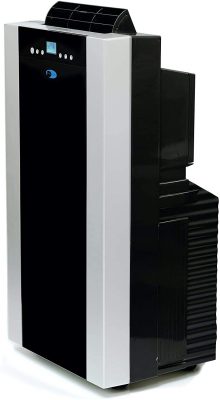
A portable air conditioner is a freestanding air conditioner with all its components packed in a single unit. It can be moved from one room to another as long as it has access to a power outlet and a window to exhaust air via its funnel. These air conditioners are best for a temporary cooling of an area and also for places where a window or split air conditioner cannot be installed. There are two models of portable air conditioners, a single-hose model and a dual hose model. The evaporator fan of these air conditioners runs continuously to remove the moisture from the air, as they are placed inside the room.
Following are some top-selling portable air conditioners:
- BLACK+DECKER BPACT10WT Portable Air Conditioner
- Whynter ARC-14S 14,000 BTU Dual Hose Portable Air Conditioner
Advantages:
- They have an easy and quick installation process and also don’t need permanent installation.
- Easy to move around the house and provide an effective spot cooling option.
- Can be easily packed and stored away when not needed.
Disadvantages:
- These are a bit noisy while operating.
- Not suitable for cooling bigger rooms.
- The hose of the portable air conditioner is placed on a window, obstructing the window’s lower part.
Floor Mounted Air Conditioner
Floor-mounted air conditioners are a substitute for mini-split air conditioners when you don’t have any space on the wall to mount your air conditioner. It has two units and the indoor unit is installed around six inches above the room floor through a hole made in the wall. It cools or heats the room faster in comparison to any other system because the air is blown directly at your level. The floor-mounted air conditioners keep the air quality very clean as the air filters are easily accessible and are most suitable for tilted walls or buildings made of any fragile material. It is important to keep the area around the unit clutter-free to maintain adequate and efficient airflow.
Advantages:
- It is easily installed.
- Easy accessibility and better air quality make it ideal for an elderly couple.
- Ideal for small areas where other types of air conditioners are difficult to install.
Disadvantages:
- Airflow can easily be compromised by furniture or any other type of obstacle.
- Not suitable for large rooms or spaces.
Smart Air Conditioner
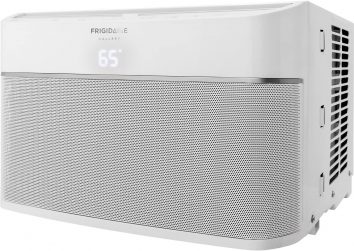
Smart air conditioners are window, mini-split, or portable air conditioners controlled by smart devices or controllers. They are connected to the wifi system and are controlled via an app that can be downloaded on any of your smart devices. These air conditioners make your life easier with the help of their extra features like geofencing, temperature range control, weekly scheduling, comfy mode, etc. The features and functionalities of these air conditioners vary as per the manufacturers but all of them offer energy efficiency and help in cost saving.
You can also look at these bestselling smart air conditioners:
- FRIGIDAIRE FGRC1044T1 10000 BTU Cool Connect Smart Window Air Conditioner
- Panasonic 1.5 Ton 5 Star Wi-Fi Twin Cool Inverter Split AC
Advantages:
- Help in saving energy bills.
- Offer convenience with its additional features.
Disadvantages:
- A wifi connection is compulsory for using the smart features.
- Expensive in comparison to the regular air conditioners.
Geothermal Air Conditioning
Geothermal air conditioning is a relatively new heating and cooling method that uses the insulating properties or the heat of the earth. This method requires the installation of a geothermal coil around 4 to 6 feet in the ground under your house. It absorbs the heat from the house during summer and circulates it back into the Earth, while during winter, it extracts the heat from the ground and distributes it inside your home. It is an energy-efficient and sustainable method with a longer lifespan than conventional air conditioners.
Advantages:
- It has a high energy efficiency resulting in lower energy bills.
- Longer lifespan in comparison to other heating and cooling systems.
Disadvantages:
- The setup cost is high.
- Installation is done based on the location of your house and the ground beneath it.
Conclusion
When you decide to get a cooling system for your home, there are various factors that you need to consider before buying an air conditioner. One of these factors is knowing about the different types of air conditioners. It is important to understand which air conditioner is ideal for your home based on its advantages, disadvantages, and features. Besides these, also make sure to go through your house design, required cooling capacity of the air conditioner, price, and energy efficiency of the different air conditioners before making your final decision.
Loading recommendations...

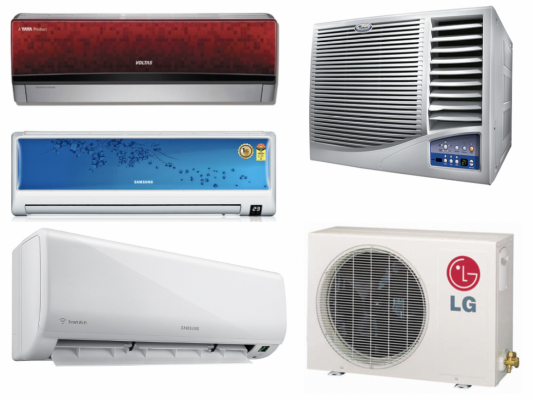
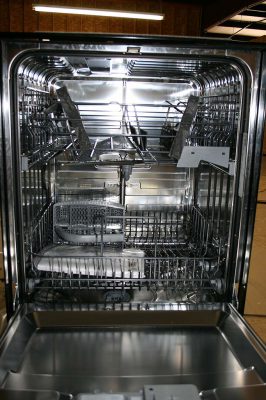
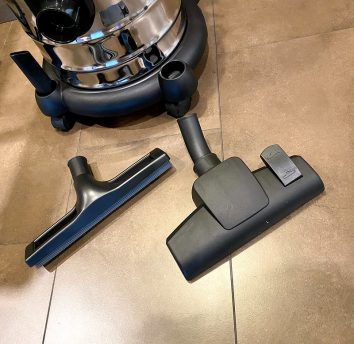
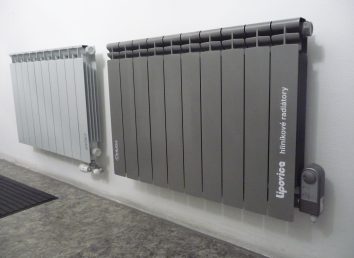
There are various types of air condition available in the market but i like smart air condition. Thanks for sharing informative information.
Because I think this article is fantastic, I am very grateful that you told me about it. That is precisely what I was looking for, and I really hope you will keep sharing great information like this in the future. foodle
Very interesting article, thanks for the provided information
saasdasd asdasdasas asdsadas adasdasdasdasas
There are many types of air conditioners available: Window AC, inverter AC, normal AC, portable AC, Split AC etc… But the old version Window AC works really well among all the Air conditioners.
Best article and informative, i really appreciate your effort for this blog.
Full informative article.
best article on air conditioners ever read
I like this well elaborative article of best air conditioners. This Compare solves my problems
This information has been very helpful, thank you.
This summer was particularly hot. The office where I worked was recently quarantined and we were transferred to remote work. But the problem is that I didn’t have an air conditioner at home before I bought it. I found contacts for communication on trane.
Our manufacturing team has more than a decade of involvement with the Precision Machining China Supplier We have delivered to more hundreds of custom precision machining services for different applications and markets
Latest Informative about Air Conditioners. I really appreciate your effort for this blog.